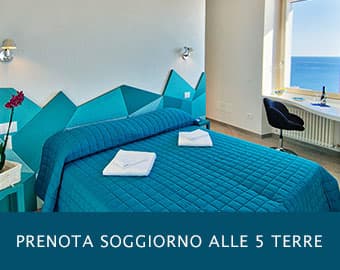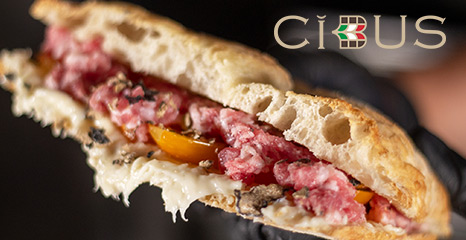Recommended
by CinqueTerre.com
 Perched on a steep promontory of dark rock, with its small port enclosed between two rocky spurs, we find Manarola, a village of ancient origin founded by the inhabitants of the settlement, perhaps Roman, of Volastra. Manarola is also characterized by the presence of the typical Genoese tower-houses; the structure of the town develops around the course, now covered, of the Groppo stream which defines its main axis; from it a series of narrow stone-paved alleys starts that reach the houses on the sides of the promontory, interspersed with vegetable gardens and panoramic openings. The intermediate levels of the town are linked together by irregular slate stairways, characterizing a typically vertical landscape.
Perched on a steep promontory of dark rock, with its small port enclosed between two rocky spurs, we find Manarola, a village of ancient origin founded by the inhabitants of the settlement, perhaps Roman, of Volastra. Manarola is also characterized by the presence of the typical Genoese tower-houses; the structure of the town develops around the course, now covered, of the Groppo stream which defines its main axis; from it a series of narrow stone-paved alleys starts that reach the houses on the sides of the promontory, interspersed with vegetable gardens and panoramic openings. The intermediate levels of the town are linked together by irregular slate stairways, characterizing a typically vertical landscape.
 Parallel to the main axis is the path of the so-called Via di Mezzo, which was of great importance in the viability of the village before covering the stream. A curiosity: the concrete pyramid painted in white that rises between the taller houses is a trigonometric signal for sailors. From the station of Manarola also the Via dell'Amore starts, the famous path that connects the village to Riomaggiore, still closed today. Another curiosity: on a wall of the cemetery you can read the verses of the poem "Liguria" by V. Cardarelli, clearly visible from afar: "Or open to the winds and waves Ligurian cemeteries! A pink sadness colors you when similar to a flower that rots, the great woman from Lucca is debased and dies".
Parallel to the main axis is the path of the so-called Via di Mezzo, which was of great importance in the viability of the village before covering the stream. A curiosity: the concrete pyramid painted in white that rises between the taller houses is a trigonometric signal for sailors. From the station of Manarola also the Via dell'Amore starts, the famous path that connects the village to Riomaggiore, still closed today. Another curiosity: on a wall of the cemetery you can read the verses of the poem "Liguria" by V. Cardarelli, clearly visible from afar: "Or open to the winds and waves Ligurian cemeteries! A pink sadness colors you when similar to a flower that rots, the great woman from Lucca is debased and dies".
Manarola: what to see
Church of San Lorenzo: it is the first attraction that you meet when you go down the main street of Manarola, via Discovolo. Built in 1338 in the Ligurian Gothic style, its local sandstone façade bears a gothic arch portal and a bas-relief of the Martyrdom of St. Lawrence in the lunette; the façade is completed with a Carrara marble rose window from 1375. The interior of the church is covered in Baroque style but a restoration of the late 20th century has partly restored the original Gothic forms. Near the baptismal font there is an ancient marble measure to check the quantity of grains and other dry materials, with the coat of arms of the Republic of Genoa and the words "Comunitas Manarolae". Opposite is the bell tower that was actually built on the remains of a pre-existing lookout tower to control the arrival of the Saracens. Also in the square is the fifteenth-century oratory of the Disciplinanti della SS. Annunziata and the building of the Lazzaretto, or ancient hospital of San Rocco.
Mill with wheel: continuing along via Discovolo you will find on your left an ancient mill with its wheel that has been restored by the Cinque Terre National Park. Hypotheses about the origins of the town's name have developed around the mill wheel. Everything starts from the time of the domination of the Republic of Genoa, when the village experienced a progressive development, becoming one of the major producers of wine and oil. According to some scholars the name Manarola derives from its agricultural vocation: in dialect "Manaraea", which in turn dates back to the oldest "magna Roea", that is magna rota, a large water mill wheel, which is actually present at the beginning of village.
 The marina: continuing to descend you finally arrive at the marina, the most scenic part of Manarola and the most photographed of the Cinque Terre, with its colorful houses tightened together, without a break, and which seem to come directly from the spur of rock that supports the village by the sea. Restaurants and places with street food allow you to savor fish dishes and the best of local cuisine as well as the renowned DOC wines of the surrounding hills. Exciting panoramas and sunsets await you in all seasons of the year, while in the summer here is bathed in the blue water and the rocks. From the marina there are paved paths that lead to the viewpoints of Punta Bonfiglio, towards the part of the municipal cemetery.
The marina: continuing to descend you finally arrive at the marina, the most scenic part of Manarola and the most photographed of the Cinque Terre, with its colorful houses tightened together, without a break, and which seem to come directly from the spur of rock that supports the village by the sea. Restaurants and places with street food allow you to savor fish dishes and the best of local cuisine as well as the renowned DOC wines of the surrounding hills. Exciting panoramas and sunsets await you in all seasons of the year, while in the summer here is bathed in the blue water and the rocks. From the marina there are paved paths that lead to the viewpoints of Punta Bonfiglio, towards the part of the municipal cemetery.
 Remains of the Castle: today it no longer exists but once it was the defensive fortress on the sea against pirate raids. It is probably the oldest part of the village since the central nucleus of the town developed here. Today it is a private home, but it is easily recognizable by its rounded stone shape.
Remains of the Castle: today it no longer exists but once it was the defensive fortress on the sea against pirate raids. It is probably the oldest part of the village since the central nucleus of the town developed here. Today it is a private home, but it is easily recognizable by its rounded stone shape.
Manarola crib: the fame of the Manarola crib has grown year by year and today is one of the most anticipated events over the Christmas period throughout the province of La Spezia and beyond. The year was 1961 when for the first time a suggestive lighted nativity scene was set up on the hill overlooking the village. Since then, it has grown and become one of the largest in the world. Everything is due to the mastery of Mario Andreoli, a ninety-one-year-old retired railwayman, artisan of the sets and characters, made with recycled material and with thousands and thousands of lights mounted on shapes that give this particular nativity a charm unique in the world. Mario Andreoli used a car battery to light the first cross, while for the two crucified thieves he used 15,000 bulbs. Today the Manarola crib is powered by a photovoltaic system. Ignition is traditionally set for December 8th.
 Surroundings: in the hinterland of Manarola there are interesting and panoramic villages, perched on the steep hills that are worth a visit like Volastra and Groppo. Volastra has a very ancient Roman origin: the village was in fact mentioned in the maps of the time as a change station for mounts along the Via dei Santuari. Surrounded by olive groves and vineyards, it represents an extraordinary panoramic point above all along the paths that run along the half coast. But even before arriving in Volastra, one comes across the tiny village of Groppo, which offers an excellent view, ranging from the typical terraced vineyards to the sea. It is home to the social winery of the Cinque Terre Agricultural Cooperative.
Surroundings: in the hinterland of Manarola there are interesting and panoramic villages, perched on the steep hills that are worth a visit like Volastra and Groppo. Volastra has a very ancient Roman origin: the village was in fact mentioned in the maps of the time as a change station for mounts along the Via dei Santuari. Surrounded by olive groves and vineyards, it represents an extraordinary panoramic point above all along the paths that run along the half coast. But even before arriving in Volastra, one comes across the tiny village of Groppo, which offers an excellent view, ranging from the typical terraced vineyards to the sea. It is home to the social winery of the Cinque Terre Agricultural Cooperative.
Manarola beaches: as in Riomaggiore, the beaches in Manarola are absent and the baths are made between the cliffs of the marina.
Manarola Trails: the Blue Path
Useful Information
How to reach Manarola:
- By train: it is advisable to use the train via the special Cinque Terre Express services that Trenitalia provides about every 10 minutes in spring-summer. Manarola stop.
- By car: from the center of La Spezia, after the A.Picco stadium take the SP 370 and at the intersection to go down to the village, park and take the ATC shuttles of "sustainable transport in the Park" at the following times or via the Explora5terre minibus.
- Sea connections: ferries available every spring and summer departing from La Spezia, Lerici and Porto Venere. Monterosso, Vernazza and Riomaggiore are also served, during the day, by inland navigation lines, with terminus Monterosso. For more information and timetables: www.navigazionegolfodeipoeti.it
Info Point Reception and Tourist Information: located at the railway station, Tel. 0187/760511, mail: accoglienzamanarola@parconazionale5terre.it





